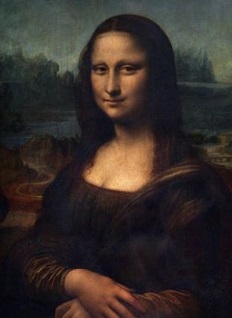‘Mona Lisa Effect’ is REAL: Scientists find out why a painting’s eyes ‘follow you’ (but say it DOESN’T happen with the DaVinci masterpiece ‘because she’s staring too far to the right’)
Many art admirers claim the eyes of Leonardo DaVinci’s Mona Lisa follow them as they move around the portrait and it has since been dubbed the ‘Mona Lisa Effect’.
This mysterious phenomenon has now been confirmed as a legitimate illusion but scientists claim the Mona Lisa does not exhibit it ,according to Daily Mail.
The discovery debunks the long-standing myth that Louvre visitors are followed around the room by the gaze of Mona Lisa.
The authors write in the study: ‘Mona Lisa does not fulfil the premise of the Mona Lisa effect: She does not gaze at the viewer.’
As part of the study, the researchers found that Mona Lisa gazes to her left-hand side from about 35.5 cm inside pictorial space.
This translates to the equivalent of 15.4° to the viewer’s right-hand side in real space.
To test this the researchers stood participants 66 cm away from a screen with the Mona Lisa on and asked them to indicate where they thought the painting was looking at a ruler fixed between the two.
The ruler was placed at 15.5 cm and 35.5 cm away from the screen in two separate experiments.
People found that the gaze of the iconic figure is roughly 15.4° away from their current position.
Researchers add that for the so-called ‘Mona Lisa Effect’ to hold true this must be within 5° of a person’s perceived location.
‘People are very good at gauging whether or not they are being looked at by others. Perceptual psychology demonstrated this in the 1960s,’ says Professor Dr Gernot Horstmann from Bielefeld University.
‘People can feel like they’re being looked at from both photographs and paintings – if the person portrayed looks straight ahead out of the image, that is, at a gaze angle of 0 degrees,’ explains Dr Horstmann.
Viewers judged Mona Lisa’s gaze as directed to their right-hand side and not looking at them.
The researchers say this means the so-called ‘Mona Lisa Effect’ is actually a misnomer.
They found that image zoom, its horizontal position on screen and the distance of the ruler that was used for measuring the gaze direction had no impact on how a viewer saw the Mona Lisa’s gaze.
‘With a slightly sideward glance, you may still feel as if you were being looked at,’ Professor Horstmann continued.
‘This was perceived as if the portrayed person were looking at your ear, and corresponds to about 5 degrees from a normal viewing distance.
‘But as the angle increases, you would not have the impression of being looked at.’
‘Curiously enough, we don’t have to stand right in front of the image in order to have the impression of being looked at – even if the person portrayed in the image looks straight ahead,’ says his colleague Dr Sebastian Loth.
He added: ‘This impression emerges if we stand to the left or right and at different distances from the image.
‘The robust sensation of ‘being looked at’ is precisely the Mona Lisa effect.’
Researchers gathered more than 2000 assessments to find where people thought she was looking.
They found almost every single measurement indicated the Mona gaze is not straight at the onlooker but to the viewer’s right-hand side.
‘The participants in our study had the impression that Mona Lisa’s gaze was aimed to their right-hand side. More specifically, the gaze angle was 15.4 degrees on average,’ says Dr Horstmann.
‘Thus, it is clear that the term ‘Mona Lisa Effect’ is nothing but a misnomer.
‘It illustrates the strong desire to be looked at and to be someone else’s centre of attention – to be relevant to someone, even if you don’t know the person at all.’
Leonardo di ser Piero da Vinci, more commonly Leonardo da Vinci or simply Leonardo, is one of the greatest individuals of the last millennium.
He painted the Mona Lisa in 1503 and it is regarded as one of the most valuable and high-profile works of art in the world.
N.H.Kh

